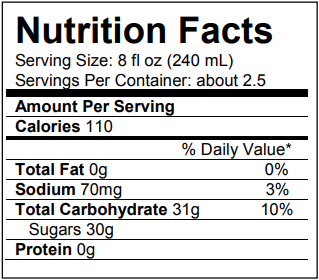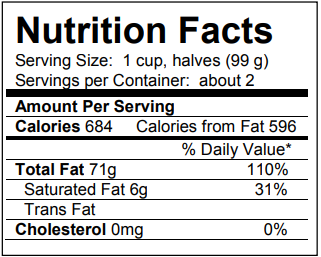1.2.1: Exercises
- Page ID
- 83268
\( \newcommand{\vecs}[1]{\overset { \scriptstyle \rightharpoonup} {\mathbf{#1}} } \) \( \newcommand{\vecd}[1]{\overset{-\!-\!\rightharpoonup}{\vphantom{a}\smash {#1}}} \)\(\newcommand{\id}{\mathrm{id}}\) \( \newcommand{\Span}{\mathrm{span}}\) \( \newcommand{\kernel}{\mathrm{null}\,}\) \( \newcommand{\range}{\mathrm{range}\,}\) \( \newcommand{\RealPart}{\mathrm{Re}}\) \( \newcommand{\ImaginaryPart}{\mathrm{Im}}\) \( \newcommand{\Argument}{\mathrm{Arg}}\) \( \newcommand{\norm}[1]{\| #1 \|}\) \( \newcommand{\inner}[2]{\langle #1, #2 \rangle}\) \( \newcommand{\Span}{\mathrm{span}}\) \(\newcommand{\id}{\mathrm{id}}\) \( \newcommand{\Span}{\mathrm{span}}\) \( \newcommand{\kernel}{\mathrm{null}\,}\) \( \newcommand{\range}{\mathrm{range}\,}\) \( \newcommand{\RealPart}{\mathrm{Re}}\) \( \newcommand{\ImaginaryPart}{\mathrm{Im}}\) \( \newcommand{\Argument}{\mathrm{Arg}}\) \( \newcommand{\norm}[1]{\| #1 \|}\) \( \newcommand{\inner}[2]{\langle #1, #2 \rangle}\) \( \newcommand{\Span}{\mathrm{span}}\)\(\newcommand{\AA}{\unicode[.8,0]{x212B}}\)
- Round 24,984.2649 up to the nearest hundredth.
- Round 24,984.2649 down to the nearest hundredth.
- Round 24,984.2649 to the nearest hundredth.
- Round 1268.7269
- To the nearest hundredth
- To the nearest hundred
- To the nearest tenth
- Assume that you drive 12,000 miles each year and you estimate the average fuel cost to be $4.28 per gallon. Your hybrid car will travel 430 miles on an 8-gallon tank of gas. Rounded to the nearest $100, estimate the annual fuel cost to drive this car.
- If the pumps about 2.5 fluid ounces of blood every beat, how many gallons of blood does it pump in a day?
- A car is driving at 100 kilometers per hour. How far does it travel in 2 seconds?
- A crepe recipe calls for 2 eggs, 1 cup of flour, and 1 cup of milk. How much flour would you need if you use 5 eggs?
- Four 3-megawatt wind turbines can supply enough electricity to power 3000 homes. How many turbines would be required to power 55,000 homes?
- A highway had a landslide, where 3,000 cubic yards of material fell on the road, requiring 200 dump truck loads to clear. On another highway, a slide left 40,000 cubic yards on the road. How many dump truck loads would be needed to clear this slide?
- A recipe for sabayon calls for 2 egg yolks, 3 tablespoons of sugar, and \(\frac{1}{4}\) cup of white wine. After cracking the eggs, you start measuring the sugar, but accidentally put in 4 tablespoons of sugar. How can you compensate?
- During the landing of the Mars Science Laboratory Curiosity, it was reported that the signal from the rover would take 14 minutes to reach earth. Radio signals travel at the speed of light, about 186,000 miles per second. How far was Mars from Earth when Curiosity landed?
- It is estimated that a driver takes, on average, 1.5 seconds from seeing an obstacle to reacting by applying the brake or swerving. How far will a car traveling at 60 miles per hour travel (in feet) before the driver reacts to an obstacle?
- The flash of lightning travels at the speed of light, which is about 186,000 miles per second. The sound of lightning (thunder) travels at the speed of sound, which is about 750 miles per hour.
- If you see a flash of lightning, then hear the thunder 4 seconds later, how far away is the lightning?
- Now let’s generalize that result. Suppose it takes n seconds to hear the thunder after a flash of lightning. How far away is the lightning, in terms of \(n\)?
- Sound travels about 750 miles per hour. If you stand in a parking lot near a building and sound a horn, you will hear an echo.
- Suppose it takes about \(\frac{1}{2}\) a second to hear the echo. How far away is the building?
- Now let’s generalize that result. Suppose it takes \(n\) seconds to hear the echo. How far away is the building, in terms of \(n\)?
- Soda is often sold in 20 ounce bottles. The nutrition label for one of these bottles is shown below. A packet of sugar (the kind they have at restaurants for your coffee or tea) typically contain 4 grams of sugar in the U.S. Drinking a 20 oz soda is equivalent to eating how many packets of sugar?

- The grocery store has bulk pecans on sale, which is great since you’re planning on making 10 pecan pies for a wedding. Your recipe calls for 1¾ cups pecans per pie. However, in the bulk section there’s only a scale available, not a measuring cup. You run over to the baking aisle and find a bag of pecans, and look at the nutrition label to gather some info. How many pounds of pecans should you buy?

- In the next 4 questions, estimate the values by making reasonable approximations for unknown values, or by doing some research to find reasonable values.
- Estimate how many gallons of water you drink in a year.
- Estimate how many times you blink in a day.
- How much does the water in a 6-person hot tub weigh?
- How many gallons of paint would be needed to paint a two-story house 40 ft long and 30 ft wide?


